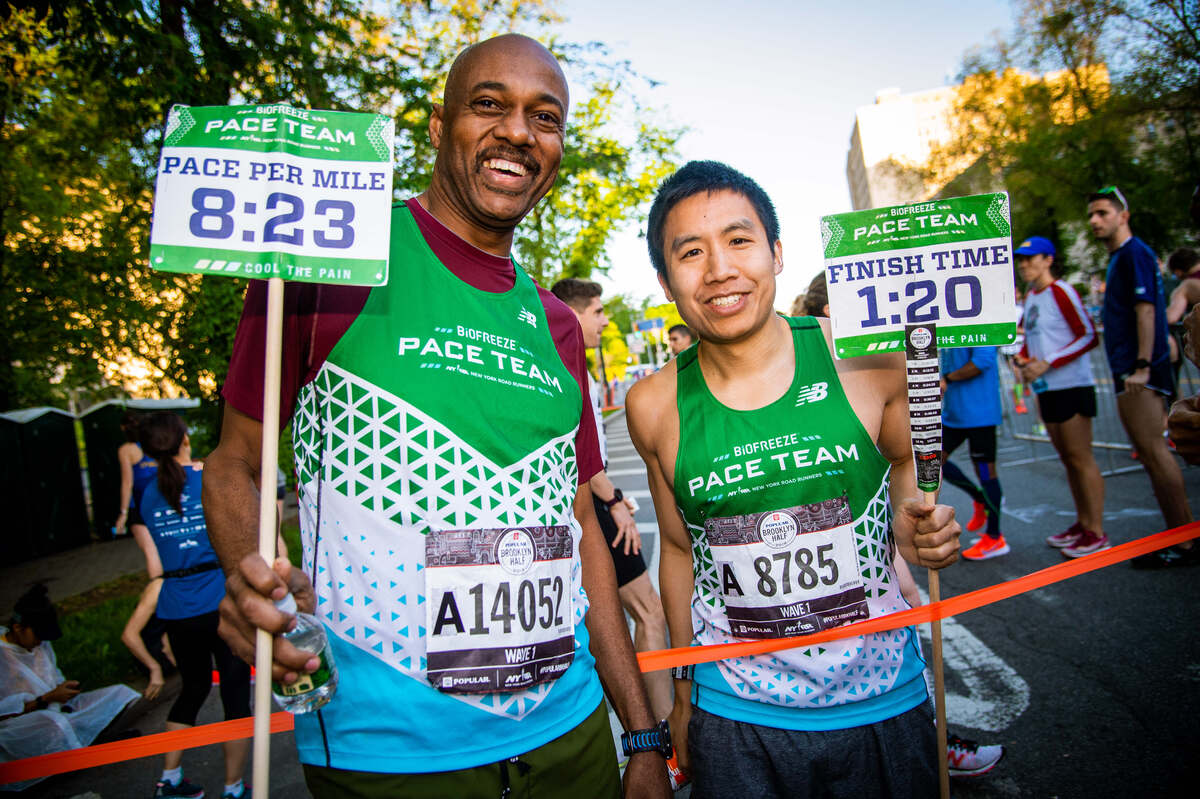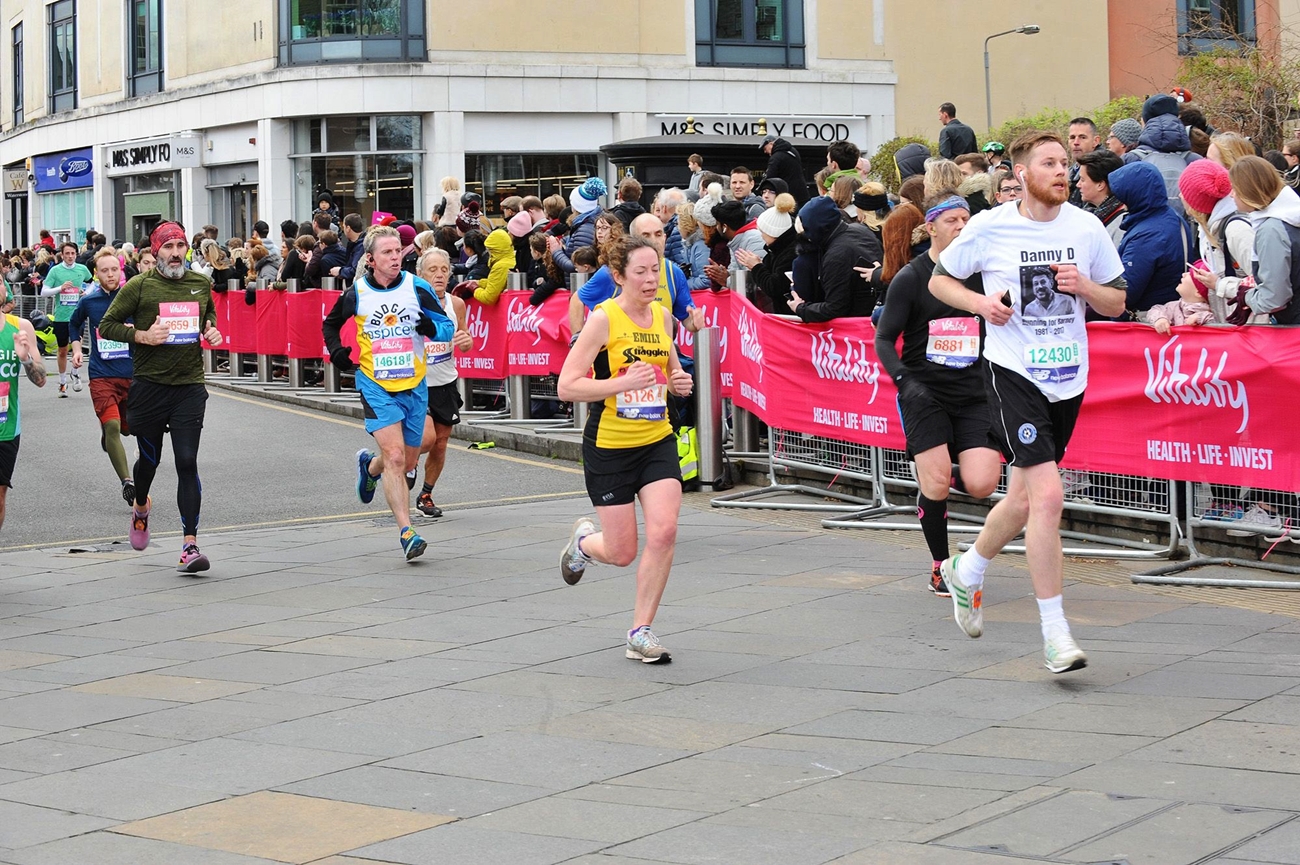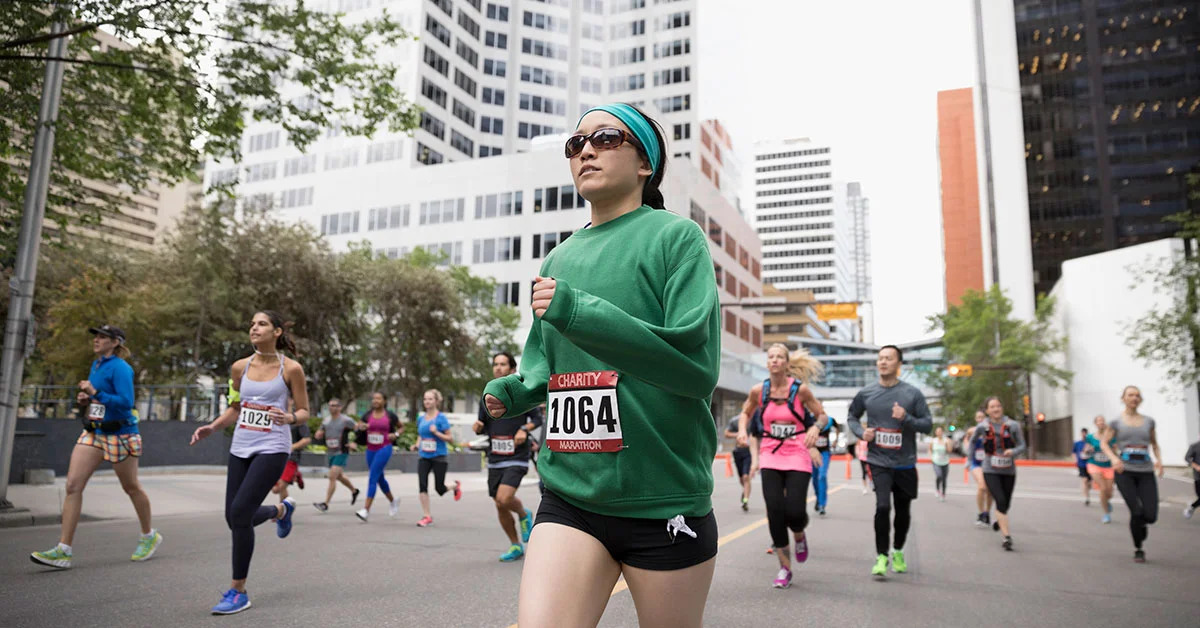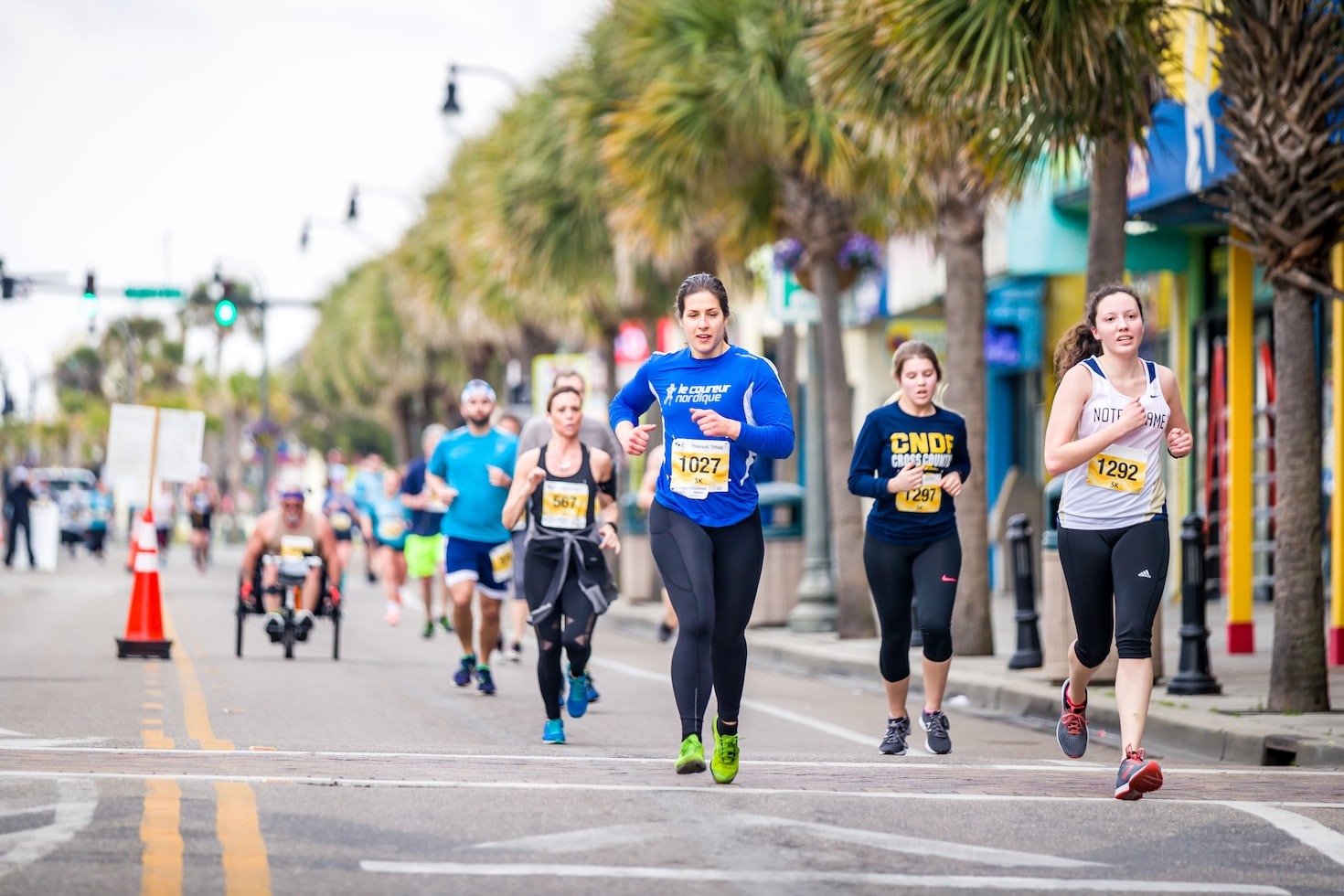

Featured
What Is A Pacer In A Marathon
Modified: January 22, 2024
Discover what a pacer is and how they can help you achieve your marathon goals. Learn about the benefits of having a featured pacer by your side.
Introduction
Welcome to the exciting world of marathon running! Whether you’re a seasoned runner or a beginner, participating in a marathon is a remarkable achievement. However, the journey to completing a marathon can be long, challenging, and sometimes overwhelming. That’s where pacers come in.
In this article, we will explore the role of pacers in marathons and how they can support and motivate runners to reach their goals. Whether you’re aiming to cross the finish line in record time or simply trying to complete the race, pacers can be valuable allies in your marathon journey.
A marathon is a daunting 26.2-mile race that requires a great deal of physical and mental endurance. It’s not uncommon for runners to experience fatigue, self-doubt, or difficulty maintaining a steady pace during the course of the race. Pacers, experienced runners who are assigned specific target times, are there to guide and assist participants throughout the marathon.
Throughout the following sections, we will delve into the definition, purpose, and qualities of pacers, as well as the benefits and potential drawbacks associated with running alongside them. Additionally, we will provide some tips on how to effectively utilize pacers to enhance your marathon experience.
So, whether you’re aiming for a personal best or simply looking for some extra support, let’s dive into the world of pacers and discover how they can make a difference in your marathon journey.
Definition of a Pacer in a Marathon
At its core, a pacer in a marathon is an experienced runner who sets a specific pace and guides a group of runners to achieve a target finish time. Pacers are typically designated by the marathon organizers and are easily identifiable through their distinct attire or signage.
Each pacer is assigned a specific target finish time, such as a four-hour marathon or a three-and-a-half-hour marathon. They are responsible for maintaining a steady pace throughout the race, ensuring that the group of runners they are leading stays on track to reach the desired finish time.
It’s important to note that pacers are not professional coaches or trainers. Instead, they are knowledgeable runners who have demonstrated their ability to maintain a consistent pace and possess a deep understanding of marathon running strategies.
Pacers take on the role of mentors, motivators, and navigators during the marathon. They act as a point of reference for runners, providing guidance in terms of maintaining a steady pace, managing energy levels, and making necessary adjustments based on race conditions.
While the role of a pacer primarily revolves around setting and maintaining the target pace, they also provide valuable information and support to the runners they lead. Pacers often have a wealth of knowledge about the course, including potential challenging sections, hydration stations, and landmarks, which they share with the group to help runners mentally prepare and stay motivated.
Overall, a pacer serves as an invaluable resource for runners throughout the race, offering guidance, motivation, and a sense of camaraderie. They play a critical role in helping runners achieve their goals and make the marathon experience more enjoyable and rewarding.
Purpose and Role of Pacers
The purpose of pacers in a marathon extends beyond just setting and maintaining a specific pace. They play a crucial role in supporting and guiding runners throughout the race, with the ultimate goal of helping them achieve their target finish time. Here are some key purposes and roles that pacers fulfill:
- Motivation and encouragement: Pacers are not only responsible for physical pacing but also for providing emotional support to the runners. They understand the mental challenges that can arise during a marathon and offer words of encouragement to help participants stay focused and motivated.
- Strategy and race knowledge: Pacers possess extensive knowledge about marathon strategies and the course itself. They are familiar with the course profile, including any inclines, declines, or other challenging sections. This knowledge allows pacers to advise runners on when to conserve energy or push harder, resulting in a more efficient race.
- Pace consistency: One of the primary roles of pacers is to maintain a steady pace throughout the race. This ensures that runners stay on track to achieve their desired finish time by avoiding burning out too early or struggling to finish strong.
- Time management: Pacers are skilled at time management and help runners gauge their progress throughout the marathon. They provide time updates, letting participants know if they are ahead or behind the target pace, allowing for adjustments in strategy or effort.
- Group cohesion: Pacers act as a unifying force within a group of runners aiming to achieve a similar finish time. By providing guidance and fostering a sense of community, pacers help runners bond and support each other during the race.
- Adapting to race conditions: Experienced pacers know how to adapt their pacing strategy based on external factors such as weather conditions or unexpected obstacles. They can make necessary adjustments to help runners cope with challenges and maintain their momentum.
The purpose and role of pacers in a marathon go beyond running at a consistent pace. They offer guidance, motivation, and expertise that can significantly enhance a runner’s performance and overall marathon experience.
Qualities and Training of Pacers
Pacers in a marathon are selected based on certain qualities and undergo specialized training to ensure they are well-prepared for their role. Here are some essential qualities and training aspects that pacers possess:
- Experience: Pacers are experienced long-distance runners who have completed numerous marathons and have a solid understanding of the physical and mental demands of the race. They have the necessary experience to handle the challenges that runners may face.
- Consistency: One of the most important qualities of a pacer is the ability to maintain a consistent pace throughout the marathon. This requires discipline, self-awareness, and the ability to adjust their own pace based on the target finish time.
- Communication skills: Effective communication is vital for pacers to convey information and instructions clearly to the group of runners they are leading. They must be able to motivate, encourage, and provide guidance to keep runners focused and motivated.
- Knowledge of race strategies: Pacers should have a deep understanding of various race strategies and pacing techniques. They need to know when to conserve energy, when to push harder, and how to help runners navigate different parts of the course to optimize performance.
- Course familiarity: Pacers meticulously study the marathon course in advance and have a comprehensive understanding of its layout, including any challenging sections, water stations, and landmarks along the way. This allows them to mentally prepare runners and provide valuable insights during the race.
- Training and certification: Before leading a group of runners in a marathon, pacers typically undergo specialized training provided by the race organizers. This training includes instruction on pacing techniques, communication skills, race strategy, and handling any unexpected situations that may arise during the race.
- Physical fitness: Pacers must be in excellent physical condition themselves to lead a group of runners in a marathon. They should have the stamina, strength, and endurance to maintain the desired pace and support participants throughout the entirety of the race.
These qualities and training aspects ensure that pacers are well-equipped to guide and support runners, enhancing their chances of achieving their desired finish time and enjoying a successful marathon experience.
How Pacers Help Runners
Pacers play a vital role in supporting and helping runners reach their goals in a marathon. Here are some ways in which pacers assist participants:
- Maintaining a steady pace: One of the primary ways pacers assist runners is by setting and maintaining a consistent pace throughout the race. This helps participants avoid starting too fast or slowing down too much, enabling them to conserve energy and stay on track to achieve their target finish time.
- Providing guidance and motivation: Pacers offer runners valuable guidance, advice, and motivation throughout the race. They understand the mental and physical challenges associated with marathons and provide words of encouragement to help participants stay focused and determined.
- Navigating the course: Pacers possess a deep knowledge of the marathon course, including its layout, difficult sections, and key landmarks. They guide runners through the course, providing essential information about upcoming hills, water stations, and other significant points of interest, enabling participants to mentally prepare and stay motivated.
- Assisting with time management: Pacers act as timekeepers during the race, constantly monitoring and providing updates on the elapsed time and the remaining distance. This information helps runners gauge their progress and make necessary adjustments to maintain their desired pace.
- Offering a sense of camaraderie: Running alongside a group of other participants, led by a pacer, creates a sense of community and support. Pacers foster a feeling of togetherness, encouraging runners to support and motivate one another, resulting in a positive and motivating atmosphere throughout the race.
- Sharing marathon insights: With their extensive experience, pacers share valuable insights and strategies with runners. They offer advice on hydration, fueling, pacing techniques, and mental fortitude, helping participants make informed decisions during the race to optimize their performance.
- Adapting to race conditions: Experienced pacers are skilled at adapting their pacing strategy based on race conditions, such as weather or unexpected obstacles. They can adjust the pace accordingly and provide guidance to help runners navigate any challenges that may arise during the marathon.
By utilizing pacers, runners can benefit from consistent pacing, expert guidance, motivation, and a supportive community, all of which contribute to a more enjoyable and rewarding marathon experience.
Benefits of Running with a Pacer
Running with a pacer can be immensely beneficial for participants in a marathon. Here are some key advantages of running alongside a pacer:
- Maintaining a consistent pace: Pacers are experts at pacing and can help runners maintain a steady and even pace throughout the race. This prevents participants from starting too fast and burning out early or struggling to maintain the desired pace, resulting in a more efficient and successful race.
- Goal achievement: With their expertise and guidance, pacers can help runners achieve their target finish time. By following the pacer, participants can stay focused and motivated, knowing they are on track to reach their marathon goal.
- Improved race strategy: Pacers possess valuable knowledge of race strategies and can provide runners with insights and advice to optimize performance. They can help participants determine when to conserve energy, when to push harder, and how to navigate challenging sections of the course efficiently.
- Motivation and support: Pacers act as motivators and sources of encouragement throughout the race. Their words of encouragement and presence can help runners stay focused, maintain a positive mindset, and push through any mental or physical challenges they may encounter.
- Course navigation: As experienced runners who are familiar with the marathon course, pacers can guide participants through the race. They provide information about upcoming hills, water stations, and other significant landmarks, allowing runners to mentally prepare and make informed decisions.
- Mentoring and camaraderie: Running with a pacer alongside a group of fellow runners creates a sense of community and support. Pacers foster an environment of camaraderie, encouraging runners to support and motivate one another, which can enhance the overall marathon experience.
- Reduced stress and decision-making: When running with a pacer, participants can rely on their expertise and guidance, reducing the need for them to make critical pacing decisions. This alleviates stress and allows runners to focus on their performance and enjoy the race.
Running with a pacer offers numerous benefits, including improved pacing, goal achievement, enhanced race strategy, motivation, and a sense of community. It can greatly enhance the overall marathon experience and increase the chances of a successful and rewarding race.
Potential Drawbacks of Running with a Pacer
While running with a pacer can be advantageous for many participants, there are also potential drawbacks that individuals should consider. Here are some possible disadvantages of running alongside a pacer:
- Rigid pacing: Pacers aim to maintain a specific pace throughout the race, which may not align perfectly with an individual runner’s preferences or abilities. Some participants may find that the set pace is either too fast or too slow for their comfort, potentially hindering their performance.
- Crowding and congestion: During a marathon, a large group of runners may choose to run with a particular pacer. This can lead to crowding and congestion, particularly at water stations or narrower sections of the course. It may become challenging to navigate through the crowd and maintain personal space.
- Lack of autonomy: For runners who prefer to have complete control over their race strategy and pace, running with a pacer may feel restrictive. Following a pacer requires relinquishing decision-making to some extent, which may not suit everyone’s preferences or race objectives.
- Dependency on the pacer: If a runner becomes overly reliant on the guidance and pacing of a pacer, it may affect their ability to self-regulate during future races. The reliance on a pacer may prevent them from developing their personal pacing skills and race strategies.
- Difficulty in personal adjustments: Pacers may not be able to cater to the individual needs or adjustments of each participant. For example, if a runner needs to slow down due to fatigue or increase their pace to catch up on lost time, it may be challenging for the pacer to accommodate individual preferences within a larger group.
- Incompatibility: In rare cases, the pacing style, communication style, or overall approach of a specific pacer may not resonate well with a particular runner. This lack of compatibility can lead to discomfort, frustration, or a diminished race experience.
It’s important for runners to weigh the benefits and drawbacks of running with a pacer and consider their own individual goals, preferences, and comfort levels when deciding whether or not to utilize a pacer in a marathon.
Tips for Utilizing Pacers Effectively
Running with a pacer can be a valuable strategy for achieving your marathon goals. Here are some tips to help you make the most of your experience with a pacer:
- Research and choose the right pacer: Prior to the race, research the available pacers and their target finish times. Select a pacer whose goal aligns with your own and whose pacing style you feel comfortable with.
- Communicate your goals: Be open and communicate your goals and expectations to the pacer before the race. Discuss your desired pace and any specific race strategies or preferences you may have.
- Start with caution: At the beginning of the race, exercise caution and avoid getting caught up in the initial excitement. Follow the pacer’s lead and gradually settle into your desired pace.
- Ask questions: Don’t hesitate to ask the pacer questions during the race. They can provide insights on race conditions, hydration strategies, or any other concerns you may have.
- Monitor your own effort: While running with a pacer, it’s essential to monitor your own effort level. Listen to your body and make adjustments if necessary. Don’t blindly push yourself beyond your limits solely based on the pacer’s pace.
- Stay mentally engaged: Running with a pacer doesn’t mean you can switch off mentally. Stay mentally engaged, focus on your running form, and use the pacer as an additional source of motivation and support.
- Be adaptable: Remember that conditions during a marathon can change. Be adaptable and prepared to make adjustments as needed. Trust the pacer’s expertise in adapting to unexpected circumstances.
- Express gratitude: After the race, take a moment to express your gratitude to the pacer for their guidance and support. A simple thank you goes a long way in acknowledging their efforts.
- Reflect and learn: Once the race is over, reflect on your experience running with a pacer. Evaluate what worked well and what you might do differently in future races to maximize your performance and enjoyment.
By following these tips, you can effectively utilize a pacer to enhance your marathon experience and increase your chances of achieving your desired finish time.
Conclusion
Running a marathon is a remarkable accomplishment, and pacers can significantly enhance the experience for participants. They offer guidance, motivation, and a sense of camaraderie that can help runners reach their goals and enjoy the race to the fullest. Pacers are experienced runners who set and maintain a specific pace throughout the marathon, allowing participants to conserve energy and stay on track.
By running alongside a pacer, runners benefit from a variety of advantages. Pacers provide a consistent pace, offer valuable insights into race strategies, navigate the course, and provide motivation and support. They create a sense of community among runners and foster an environment that encourages mutual support and motivation throughout the race.
While there are potential drawbacks to running with a pacer, such as rigid pacing or crowded conditions, careful consideration of individual preferences and goals can help participants make an informed decision about whether to utilize a pacer.
To make the most of the experience, it’s crucial to choose the right pacer, communicate goals and expectations, remain mentally engaged, and stay adaptable to changing race conditions. After the marathon, expressing gratitude to the pacer is a small but meaningful gesture of appreciation for their guidance and support.
Running with a pacer can truly make a difference in a runner’s marathon journey. Whether aiming for a personal best or simply seeking the support and motivation to complete the race, the presence of a pacer can be invaluable in achieving marathon goals and creating a memorable and fulfilling experience.








